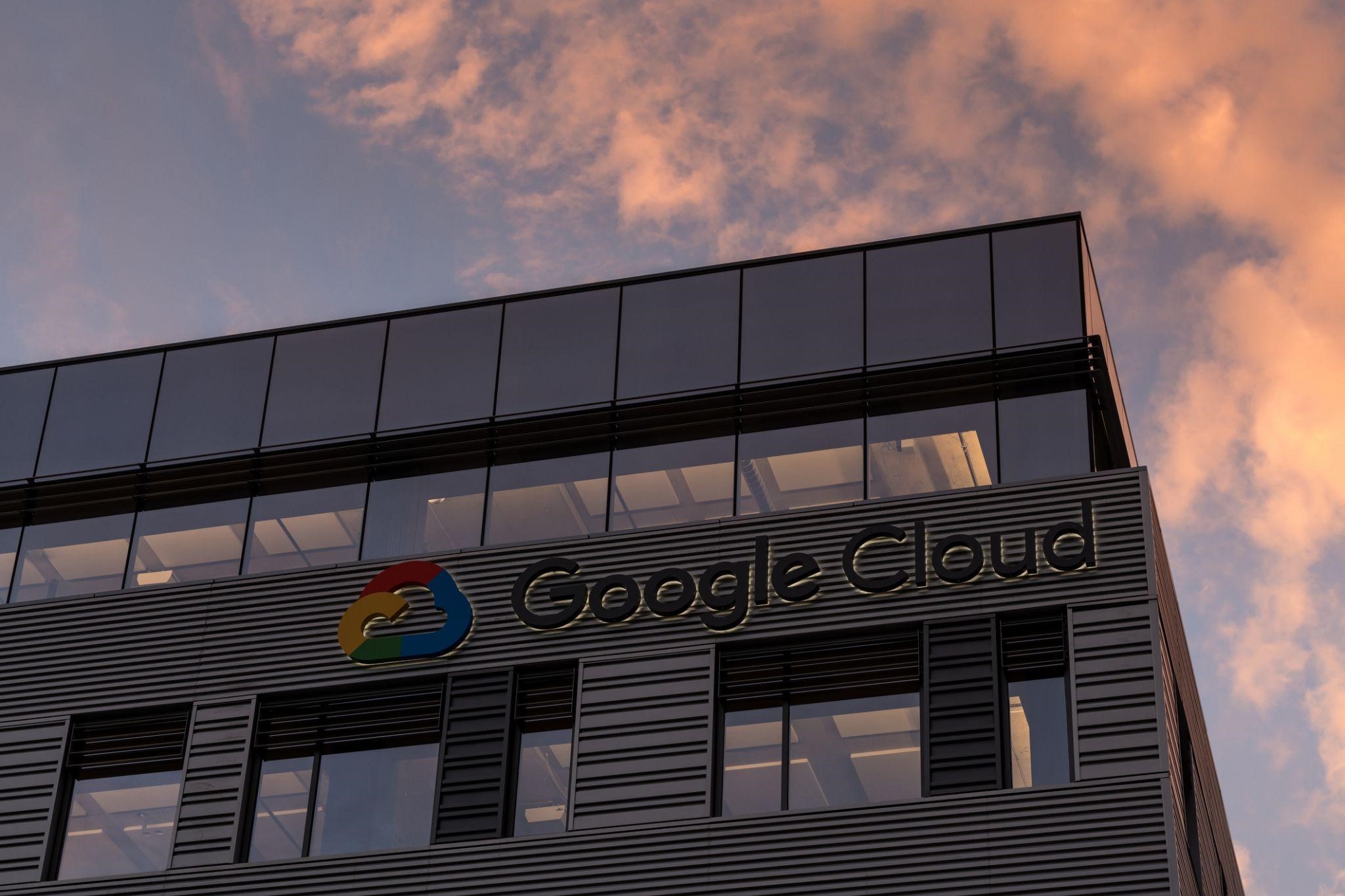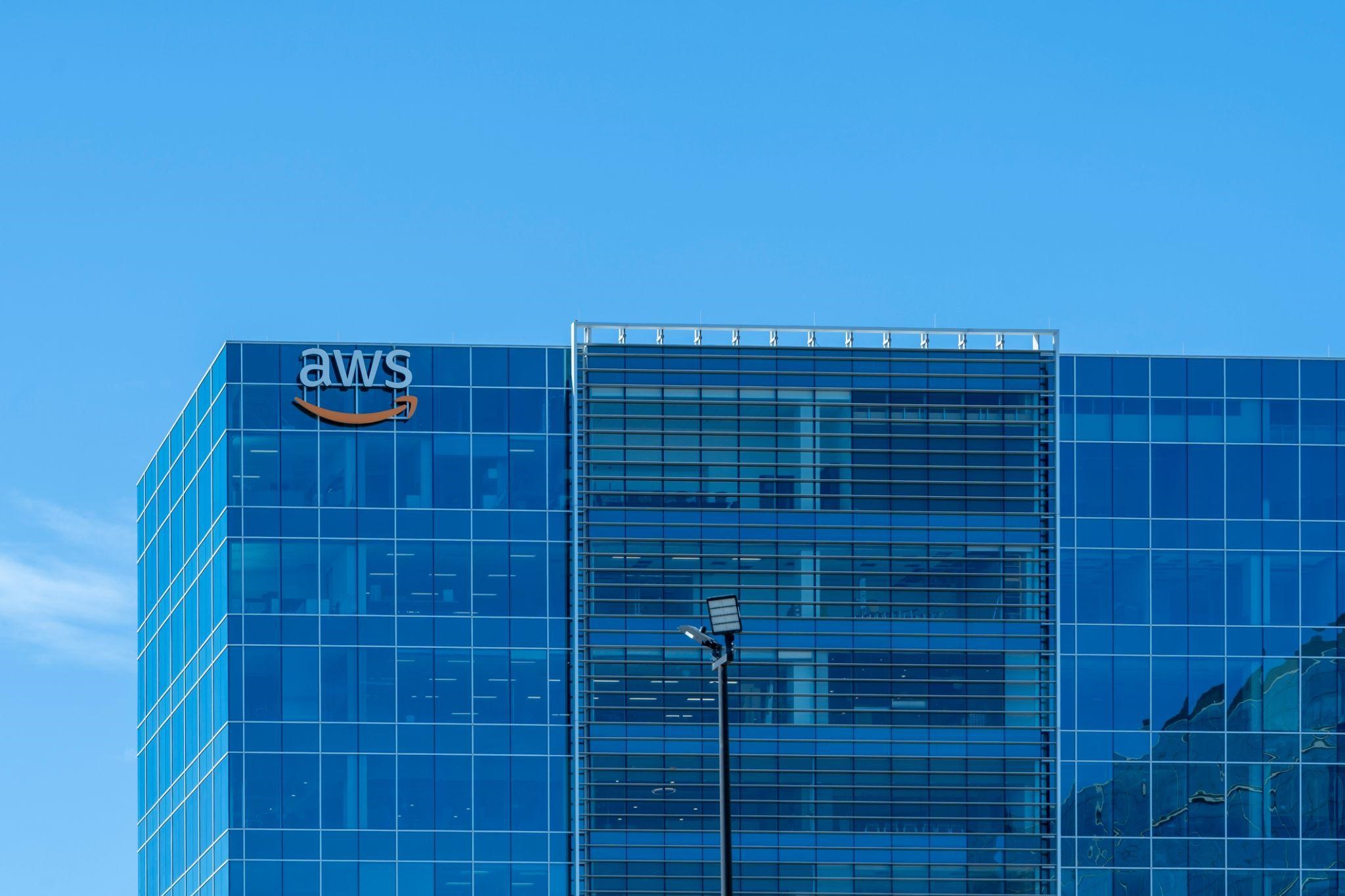Google Cloud vs AWS

In today's rapidly evolving cloud landscape, the choice between Google Cloud and AWS is a pivotal one for businesses of all sizes. Each platform boasts unique strengths and specialized cloud computing services, making the decision a complex yet critical factor in shaping a successful cloud strategy. As organizations increasingly leverage cloud technologies to drive innovation and growth, the selection among these industry-leading cloud service providers and other cloud computing service options becomes a defining moment in their digital transformation journey. The role of cloud storage and various cloud computing service options further adds complexity to the decision-making process for organizations transitioning to cloud environments.


Google Cloud
Google Cloud stands as a leader in the cloud computing industry, providing a comprehensive suite of services designed to empower businesses of all sizes. Since its inception in 2008, Google Cloud has rapidly evolved into a preferred cloud solution, renowned for its flexible infrastructure and cutting-edge technologies that unlock the full potential of the cloud for organizations.
A key differentiator of Google Cloud is its ability to cater to the diverse needs of businesses, from agile startups seeking scalable solutions to large enterprises requiring robust infrastructure. This is achieved through a wide array of offerings, including Google Cloud Storage, Google Cloud Functions, Google Kubernetes Engine, and the comprehensive Google Cloud Platform. For startups, Google Cloud offers the flexibility and scalability essential for rapid development. Large enterprises benefit from a comprehensive suite of services, including robust infrastructure, advanced security, and seamless integration capabilities. This breadth of offerings, spanning compute, storage, analytics, and machine learning, empowers organizations to build and scale their digital initiatives effectively.
Google Cloud's commitment to technological innovation, particularly in data analytics and machine learning, sets it apart as a valuable partner for businesses navigating the complexities of the digital landscape. With a focus on delivering transformative solutions, Google Cloud enables organizations to embark on an immersive journey through the cloud, fostering growth, agility, and competitive advantage.

AWS (Amazon Web Services)
Amazon Web Services (AWS) stands as a pioneering leader, with its flagship offering, Amazon Elastic Compute Cloud (EC2), at the forefront. Since its inception in 2006, AWS has consistently set the benchmark for the cloud industry, driving innovation and shaping the way businesses approach their digital infrastructure.
Organizations embarking on their cloud journey should carefully assess their unique goals and requirements to determine the optimal cloud service provider, whether it be AWS, Google Cloud, Azure, or another provider. Factors such as service scalability, performance, security features, and the level of support offered by each platform should be evaluated to make an informed decision. The "best" choice ultimately depends on how well the selected cloud provider aligns with the organization's strategic objectives and operational needs.
Microsoft Azure
Microsoft Azure, encompassing Azure Cloud and Azure SQL Database, stands as a comprehensive powerhouse in the cloud computing landscape. Its vast array of services, tools, and resources empowers individuals and businesses to thrive in the digital age.
As a leading cloud service provider, Azure enables users to seamlessly create, deploy, and manage applications, leveraging a global network of state-of-the-art data centers. With a focus on scalability, flexibility, and security, Azure addresses a wide range of computing needs, from virtual machines and databases to AI and machine learning, IoT, and more. Its robust service portfolio fosters innovation and agility, while features like Azure DevOps streamline collaboration and continuous integration.
A notable strength of Azure lies in its commitment to hybrid cloud solutions, bridging the gap between on-premises infrastructure and the cloud. This unique approach allows users to maximize existing investments while harnessing the advantages of cloud computing.

Products and services
Google Cloud and AWS offer a wide array of services to meet the diverse needs of modern businesses. From foundational compute and storage to advanced databases and machine learning capabilities, both platforms provide a comprehensive toolkit for building and scaling digital solutions.
Understanding the nuances between specific services is crucial for organizations making informed cloud decisions. Here's a closer look at two key areas of comparison:
1. Google Compute Engine vs AWS EC2
Amazon EC2 and Google Compute Engine are core services that provide scalable virtual machines in the cloud, offering flexibility to configure resources based on computational demands. While both services share similar functionalities, EC2 and Compute Engine differ in pricing models, instance types, and additional features. A thorough evaluation can reveal which platform best aligns with specific workload requirements and budget constraints.
2. Cloud Functions and AWS Lambda
Serverless computing has emerged as a powerful paradigm for efficient and cost-effective application development. Google Cloud Functions and AWS Lambda are leading serverless platforms, enabling developers to run code without managing servers. Understanding the distinctions in execution environments, supported languages, and event triggers can guide organizations toward the ideal serverless solution for their specific use cases.

3. Google Kubernetes vs. AWS Kubernetes
Google Kubernetes Engine (GKE) and Amazon Elastic Kubernetes Service (EKS) are powerful tools for managing and orchestrating containerized applications at scale. Both platforms leverage the transformative capabilities of Kubernetes, simplifying the complexities of deploying and managing applications in the cloud. By seamlessly coordinating the various components within a containerized ecosystem, GKE and EKS empower organizations to achieve streamlined and efficient operations in the dynamic cloud environment.
However, there are key differences to consider:
- GKE is deeply integrated with the Google Cloud Platform (GCP) ecosystem, offering seamless access to GCP services and a streamlined user experience for those already invested in the platform. It is known for its rapid release cycles, keeping pace with the latest Kubernetes features and innovations.
- EKS provides tight integration with AWS services and infrastructure, making it an attractive choice for organizations heavily invested in the AWS ecosystem. It emphasizes flexibility and customizability, allowing for greater control over Kubernetes configurations and deployments.
Choosing between GKE and EKS depends on your specific requirements, cloud provider preference, and desired level of control. Evaluating factors such as ease of use, integration capabilities, and feature sets can help determine the ideal platform for your container orchestration needs.
4. Cloud Storage and AWS S3
Google Cloud Storage and Amazon S3 are both robust and scalable object storage solutions fundamental for any cloud computing strategy. Each platform offers durable storage for a wide range of data types and use cases, making them essential tools for businesses navigating the digital landscape.
Understanding the nuances between these two storage giants is key for informed decision-making:
- Google Cloud Storage: Integrates seamlessly with other Google Cloud services, offering a unified experience for those already invested in the platform. It is renowned for its strong consistency model, ensuring that data updates are immediately reflected across all copies. It also offers a multi-regional storage class for applications that demand high availability and low latency across multiple geographic regions.
- AWS S3: Boasting the longest track record and largest market share, S3 is a mature and widely adopted solution. It provides a vast array of storage classes with varying performance and cost characteristics, allowing organizations to optimize storage costs based on their access patterns and data lifecycle requirements. S3 also offers robust data management features, including versioning, lifecycle policies, and cross-region replication.
Choosing between Google Cloud Storage and AWS S3 depends on your specific needs and priorities. Consider factors such as consistency requirements, geographic distribution, data access patterns, and budget constraints when making your decision
5. Cloud Dataflow vs AWS Glue
Data processing and analytics are integral components of modern cloud strategies, and both Google Cloud Dataflow and AWS Glue offer powerful managed services for seamless data extraction, transformation, and loading (ETL). Understanding their distinct capabilities, service structures, and compatibility with various data sources is essential for organizations seeking to optimize their data pipelines.
- Google Cloud Dataflow: A fully managed, serverless data processing service that excels at both batch and streaming data workloads. It seamlessly integrates with other Google Cloud services like BigQuery and Pub/Sub, making it a natural choice for organizations invested in the Google Cloud ecosystem. Dataflow's unified programming model simplifies the development of complex data pipelines, while its autoscaling capabilities ensure optimal performance and cost efficiency.
- AWS Glue: A serverless ETL service that simplifies the process of discovering, preparing, and combining data for analytics, machine learning, and application development. Glue automatically generates ETL code, significantly reducing development time. It integrates seamlessly with other AWS services like S3, Redshift, and Athena, providing a cohesive data management experience within the AWS environment. Glue's flexible job scheduling and monitoring capabilities further enhance its appeal for organizations seeking streamlined data processing workflows.
Choosing between Cloud Dataflow and AWS Glue involves careful consideration of several factors. If your organization is heavily invested in the Google Cloud ecosystem and requires a unified approach to batch and streaming data processing, Dataflow might be the preferred choice. However, if you prioritize simplified ETL development, seamless integration with AWS services, and flexible job management, AWS Glue could be a better fit. Ultimately, the ideal solution depends on your specific data processing needs, cloud provider preferences, and budget constraints.
Google Cloud vs AWS comparison
Google Cloud and AWS are at the forefront of cloud computing, each offering a robust suite of services, pricing models, and business terms tailored to diverse organizational needs. Both platforms provide a wealth of options, each with its unique advantages.
1. Machine learning: a comparative lens
Machine learning is a pivotal area where cloud computing intersects with innovation, empowering organizations to harness the power of artificial intelligence (AI) for a multitude of applications. Google Cloud and AWS both offer a wide array of machine learning services and products, each with distinct strengths and capabilities.

Google Cloud’s machine learning products
Google Cloud's machine learning offerings are anchored by TensorFlow, a leading open-source machine learning framework, and AI Platform, a comprehensive suite for model development, training, and deployment. Google Cloud also excels in AutoML, with services like AutoML Vision and AutoML Natural Language enabling businesses to build custom machine learning models with minimal effort and expertise.
Amazon Web Services’ machine learning offerings
AWS offers a diverse range of machine learning services. Amazon SageMaker stands out as a fully managed service that streamlines the entire machine learning workflow, from building and training models to deployment and scaling. Other notable services include Amazon Comprehend for natural language processing, Amazon Polly for text-to-speech conversion, and Amazon Rekognition for image and video analysis.
Choosing the right fit:
The choice between Google Cloud and AWS for machine learning depends on several factors, including:
- Expertise: Google Cloud's AutoML may be more suitable for businesses with limited machine learning expertise, while AWS SageMaker offers greater flexibility for experienced practitioners.
- Framework preference: If your team is already familiar with TensorFlow, Google Cloud might be a natural fit.
- Specific use cases: Consider the specific machine learning tasks you need to accomplish. Both platforms offer specialized services for different applications, so choose the one that aligns best with your requirements.
- Cost: Pricing models vary between the two providers, so a careful cost analysis is essential.
Ultimately, the optimal choice hinges on your organization's unique needs and preferences. By thoroughly evaluating the strengths and weaknesses of each platform, you can make an informed decision that maximizes the potential of machine learning in your cloud environment.
2. AWS vs Google Cloud price comparison
Cost considerations are a significant factor when choosing a cloud provider. Both AWS and Google Cloud offer flexible pricing models designed to cater to diverse business needs. Understanding their pricing structures can empower organizations to optimize costs and align spending with their specific requirements.

AWS pricing: flexible and scalable
- Volume-based discounts: AWS incentivizes increased usage with volume-based discounts. As your consumption grows, the per-unit cost decreases, making it a cost-effective choice for scaling businesses.
- Reserved instances: Significant savings can be achieved with Reserved Instances, offering substantial discounts compared to on-demand pricing for those committed to a one- or three-year term.
- Pay-as-you-go: AWS offers a consumption-based pricing model where users only pay for the resources they actually use, providing flexibility for businesses with fluctuating workloads.
Google Cloud pricing: granular control and predictability
- Sustained use discounts: Google Cloud rewards consistent resource usage with automatic sustained use discounts, providing cost savings without any upfront commitment.
- Committed use discounts: Additional discounts are available for users willing to commit to a specific usage level for a one- or three-year term.
- Pay-per-use: Google Cloud's granular pricing model ensures that users are billed only for the resources they consume, offering precise cost allocation for budget-conscious organizations.
Cost estimation and management tools
Both AWS and Google Cloud offer pricing calculators to help users estimate their monthly costs accurately. They also provide budgeting tools and cost controls, enabling organizations to monitor and manage their spending effectively.

The verdict
While AWS offers attractive volume-based discounts and reserved instance pricing for committed usage, Google Cloud's sustained use discounts and granular billing can be advantageous for businesses seeking predictability and precise cost control. The most cost-effective option will ultimately depend on your specific usage patterns, workload characteristics, and commitment preferences. Careful analysis and comparison of both platforms are essential to determine the best fit for your organization's financial and operational goals.
3. Regions and availability
The global infrastructure of cloud service providers is designed to deliver low-latency, high-availability services worldwide. Google Cloud and AWS, two industry leaders, operate extensive networks of state-of-the-art data centers strategically distributed across the globe, organized into regions and availability zones.
- Regions: Geographic areas that house multiple availability zones. Choosing the right region can optimize performance and compliance with data residency requirements.
- Availability zones: Isolated locations within a region, designed to be independent of each other for fault tolerance. Deploying resources across multiple availability zones enhances application resilience and availability.
| AWS | Google Cloud | |
| Overview | Amazon Web Services, developed and maintained by Amazon, stands as the leading global cloud provider, offering a range of cloud storage and computing services.
Introduced in the year 2006. |
Google Cloud Platform (GCP), developed by Google, is a major cloud provider offering a wide array of cloud computing services. It leverages Google's robust infrastructure shared with other Google services.
Introduced in the year 2008 |
| Job market and salaries | A LinkedIn search for AWS Cloud Engineers yields over 45,000 job listings.
In the United States, the annual average salary for an AWS Cloud Engineer is $136,453. |
A search on LinkedIn for Google Cloud Engineers returns over 24,000 results.
In the United States, the average annual salary for a Google Cloud Engineer is $141,375. |
| Availability | AWS operates in 96 Availability Zones within 31 geographic regions worldwide, with announced plans for further expansion. | Google Cloud Platform (GCP) operates in over 200 countries and territories, with 38 regions and 106 zones, and plans for continued expansion. |
| Pricing and invoicing | AWS offers flexible pricing with various instance types and purchasing options like On-Demand Instances, Reserved Instances, and Spot Instances. Pricing can vary significantly depending on the specific configuration and usage patterns. A Pricing Calculator is available to estimate costs. | Google Cloud offers flexible pricing with sustained use discounts and committed use discounts, along with a pay-as-you-go model. Pricing can vary depending on the specific configuration and usage patterns. A Pricing Calculator is also available. |
| Market share | AWS holds the largest share of the public cloud market, with estimates typically ranging between 32-34% | Google Cloud has been steadily growing its market share, with estimates typically ranging between 8-11%. |
| Compute Services | EC2 (Elastic Compute Cloud) | Compute Engine |
4. Services
Google Cloud and AWS offer extensive portfolios of cloud services catering to the diverse and evolving needs of businesses. These services span a wide range of categories, encompassing the entire cloud ecosystem to address various aspects of modern technology infrastructure.
Cloud security services
Security stands as a paramount concern in the cloud environment, and both Google Cloud and AWS prioritize robust security measures to protect data, applications, and infrastructure. Both platforms offer comprehensive security solutions, ranging from identity and access management (IAM) to encryption, threat detection, and compliance tools.
- Google Cloud: Provides a multi-layered security approach with features like Cloud Armor for web application firewall protection, Security Command Center for threat detection and response, and Identity-Aware Proxy (IAP) for granular access control.
- AWS: Offers a wide array of security services, including AWS Identity and Access Management (IAM), Amazon GuardDuty for intelligent threat detection, AWS Shield for DDoS protection, and AWS Key Management Service (KMS) for encryption key management.
Choosing the right cloud provider for security depends on your specific requirements and risk profile. It's essential to evaluate the security features, compliance certifications, and track record of both platforms to ensure that your data and applications are protected in the cloud.
| Services | AWS | Google Cloud |
| Web firewall | AWS WAF, AWS Shield, AWS Firewall Manager | Cloud Armor |
| Security threat detection | Amazon GuardDuty, Amazon Detective, Amazon Macie | Security Command Center, Chronicle |
| Identity and access control | AWS Identity and Access Management (IAM) | Google Cloud Identity and Access Management (IAM) |
Database Services
Database management is a fundamental component of cloud computing, and both Google Cloud and AWS provide robust managed database services to streamline deployment, scaling, and management.
Here's a more comprehensive comparison of their offerings:
| Services | AWS | Google Cloud |
| Managed NoSQL database service | DynamoDB, DocumentDB (MongoDB-compatible) | Cloud Bigtable, Firestore |
| Managed data warehouse service | Amazon Redshift | Google BigQuery |
| RDBMS as service | Amazon RDS (supports MySQL, PostgreSQL, SQL Server, Oracle, MariaDB) | Cloud SQL (supports MySQL, PostgreSQL, SQL Server) |
| Managed in-memory database service | Amazon ElastiCache (Redis and Memcached) | Memorystore (Redis) |
Key considerations
- Data model: Choose the database type (relational, NoSQL, etc.) that best suits your application's data structure and access patterns.
- Scalability: Consider how easily the database can scale to accommodate growing data volumes and traffic.
- Performance: Evaluate the performance characteristics of each service, including query response times and throughput.
- Integration: Assess how well the database integrates with other services within the chosen cloud provider's ecosystem.
- Pricing: Compare pricing models to ensure they align with your budget and usage patterns.
Both AWS and Google Cloud offer a diverse range of managed database services to meet various needs. By carefully evaluating your requirements and the strengths of each platform, you can select the ideal database solution to power your cloud-based applications.
Storage services
Scalable and reliable storage solutions are fundamental for modern businesses, and both Google Cloud and AWS offer a range of storage services to meet diverse requirements.
| Services | AWS | Google Cloud |
| File storage | Elastic File System (EFS), FSx for Windows File Server | Filestore |
| Archive storage | S3 Glacier Instant Retrieval, S3 Glacier Flexible Retrieval, S3 Glacier Deep Archive | Cloud Storage Nearline, Cloud Storage Coldline, Archive Storage |
| Block storage | Elastic Block Storage (EBS) | Persistent Disk |
| Object storage | Simple Storage Service (S3) | Google Cloud Storage |
Key considerations
- Storage type: Choose the right type of storage (object, block, or file) based on your data access patterns and application requirements.
- Performance: Consider the performance characteristics of each service, including throughput, latency, and IOPS (Input/Output Operations Per Second).
- Durability: Evaluate the durability and availability guarantees of each service to ensure your data is protected against loss or downtime.
- Cost: Compare pricing models to find the most cost-effective solution for your specific workload and storage needs.
Both Google Cloud and AWS offer comprehensive storage solutions with varying features and price points. A thorough evaluation of your storage requirements will help you determine the best platform and service for your specific use case.
Container services
Containerization has revolutionized application deployment and management, offering a streamlined and efficient approach. Both Google Cloud and AWS provide robust container services that simplify the orchestration and management of containerized applications.
| Services | AWS | Google Cloud |
| Serverless container services | AWS Fargate | Cloud Run |
| Container orchestration service | Amazon Elastic Container Service (ECS), Amazon Elastic Kubernetes Service (EKS) | Google Kubernetes Engine (GKE) |
| Function as a service (FaaS) | AWS Lambda | Cloud Functions |
Key considerations
- Orchestration: If you need fine-grained control and customization over your Kubernetes environment, EKS might be a better fit. However, if you prefer a managed Kubernetes experience with seamless integration with Google Cloud services, GKE could be the ideal choice.
- Serverless containers: For applications that require rapid scaling and a simplified operational model, both AWS Fargate and Cloud Run offer serverless container platforms. Fargate seamlessly integrates with ECS and EKS, while Cloud Run provides a fully managed environment.
- Function as a service (FaaS): If you're looking for an event-driven, serverless compute solution, both AWS Lambda and Google Cloud Functions are excellent options. Choose the platform that best aligns with your preferred programming languages and event sources.
Both Google Cloud and AWS offer comprehensive container services to cater to various use cases and preferences. Thoroughly evaluate your specific requirements, budget, and desired level of control to determine the optimal platform for your containerized workloads.
Compute services
Compute power is the foundation of cloud services, and both Google Cloud and AWS offer a wide range of scalable and flexible compute options to cater to diverse workload requirements.
| Services | AWS | Google Cloud |
| Platform as a service (PaaS) | Elastic Beanstalk, AWS Lightsail | App Engine |
| Virtual Servers | Elastic Compute Cloud (EC2) | Compute Engine |
| Cloud infrastructure by VMware | AWS Outposts, VMware Cloud on AWS | Google Cloud VMware Engine |
| Serverless computing | AWS Lambda | Cloud Functions |
Market share
The cloud computing market is a dynamic landscape, with AWS currently maintaining a dominant position in overall market share. However, Google Cloud has been steadily gaining ground, particularly in areas that leverage its strengths in data analytics and machine learning.
- AWS: With its early entry into the cloud market and extensive service portfolio, AWS has established a significant lead in terms of market share. It remains a popular choice for businesses of all sizes due to its maturity, scalability, and broad range of services.
- Google Cloud: While still trailing AWS in overall market share, Google Cloud has been making notable progress. Its focus on data analytics, machine learning, and AI-powered solutions has attracted a growing customer base, especially in industries where these capabilities are paramount.
Choosing the right provider:
The choice between Google Cloud and AWS often hinges on specific business needs and priorities. Consider the following factors when evaluating market share:
- Overall adoption: AWS's larger market share indicates a wider user base and potentially more community support.
- Specific industry trends: Assess the adoption patterns in your specific industry. Some sectors may lean towards Google Cloud due to its specialized offerings.
- Future outlook: Consider the growth trajectory of each platform. Google Cloud's consistent growth suggests a potential shift in market dynamics.
Ultimately, the decision should not solely rely on market share. Thoroughly evaluate the strengths, weaknesses, and specific offerings of each platform to determine the best fit for your organization's unique requirements and goals.
Difficulty level: Ease of use and learning curve
The ease of use and learning curve associated with cloud services are crucial factors for organizations, especially those new to cloud computing. The complexity of various platforms and services can significantly impact adoption rates and the speed at which teams can leverage the benefits of cloud technologies.
Factors influencing ease of use:
- User Interface (UI): A clean, intuitive UI simplifies navigation and reduces the time it takes to find and utilize desired features.
- Documentation and support: Comprehensive documentation, tutorials, and readily available support resources are essential for quickly resolving issues and accelerating the learning process.
Service integration: Seamless integration between different services within a platform can simplify workflows and reduce the need to learn multiple, disparate tools.
AWS vs. Google Cloud: A comparative perspective
AWS, while renowned for its breadth of services and scalability, is often perceived as having a steeper learning curve. Its vast array of features and services can be overwhelming for beginners. However, AWS provides extensive documentation, training resources, and a large community of users to support the learning process.
Google Cloud, on the other hand, is often praised for its user-friendly interface and streamlined experience. Its services are generally considered easier to learn and use, making it a more approachable option for organizations new to cloud computing. Google Cloud also provides comprehensive documentation and support to assist users in getting started.
Choosing the right fit
The ideal cloud platform in terms of ease of use ultimately depends on your organization's specific needs and technical expertise. If you have a team with prior cloud experience or are willing to invest in training, AWS's vast capabilities might be appealing. However, if ease of use and a quick learning curve are top priorities, Google Cloud could be a more suitable choice.
By carefully evaluating your organization's technical proficiency and considering the available resources and support from each provider, you can select a cloud platform that enables a smooth transition to the cloud and fosters long-term success.

AWS Virtual Private Cloud vs Google Cloud Virtual Private Cloud
Virtual Private Clouds (VPCs) offer isolated network environments within public cloud infrastructures, enabling organizations to design and control their network architecture. Both AWS and Google Cloud provide robust VPC solutions with distinct features and capabilities.
| Feature | AWS VPC | Google Cloud VPC |
| Scope | Regional (confined to a specific AWS region) | Global (spans multiple regions) |
| Subnets | Customizable sub-networks within a VPC | Automatic subnets created in each region within the VPC |
| Security | Security Groups (stateful, instance-level) and Network ACLs (stateless, subnet-level) | Firewall rules (can be applied at the network or project level) |
| Peering | VPC Peering (connects VPCs within the same AWS account) and Transit Gateway (connects multiple VPCs and on-premises networks) | VPC Peering (connects VPCs within the same project) and Shared VPC (enables resource sharing across multiple projects) |
| IP addressing | IPv4 and IPv6 support | IPv4 and IPv6 support |
| Additional features | Dedicated Instance, ClassicLink, VPC endpoints, NAT Gateway, Virtual Private Gateway, Customer Gateway | Cloud Router, Cloud NAT, Cloud VPN, Interconnect, Private Service Connect |
Key considerations
- Regional vs. global: AWS VPCs are regional, while Google Cloud VPCs are global. Consider your geographic requirements and network topology when choosing.
- Security: Evaluate the security features of each platform to ensure they meet your organization's compliance and security policies.
- Networking complexity: AWS VPCs offer more granular control and flexibility, while Google Cloud VPCs provide a simpler, more streamlined experience.
- Integration with other services: Consider how well the VPC integrates with other services within the chosen cloud provider's ecosystem.
Choosing between AWS VPC and Google Cloud VPC depends on your specific needs and preferences. Both platforms offer robust and scalable VPC solutions, but their unique features and capabilities cater to different use cases. By carefully assessing your requirements and comparing the strengths of each platform, you can select the VPC solution that best aligns with your organization's cloud networking goals.
Contrasting AWS Identity and Access Management with Google Cloud Identity and Access Management
Identity and Access Management (IAM) systems play a critical role in controlling access to resources within cloud environments. AWS Identity and Access Management (IAM) and Google Cloud Identity and Access Management (IAM) are both robust solutions, but they differ in their approach, user experience, and integration capabilities.
Key differences
| Feature | AWS IAM | Google Cloud IAM |
| Core concepts | Users, Groups, Roles, Policies (JSON documents) | Users, Groups, Roles, Permissions (defined by roles) |
| Policy management | Policies attached directly to users, groups, or roles | Permissions inherited through roles, with fine-grained control through custom roles |
| User interface | Console-based and API-driven. Often considered less intuitive for beginners. | Console-based and API-driven. Generally perceived as more user-friendly. |
| Integration | Seamless integration with other AWS services | Seamless integration with other Google Cloud services |
| Additional features | AWS Organizations for managing multiple AWS accounts, AWS Single Sign-On (SSO) for centralized identity management | Google Cloud Identity Platform for managing identities across Google Cloud and other applications, integration with Google Workspace |
Key considerations
- Granularity of control: AWS IAM offers granular control through policies, but can be complex to manage. Google Cloud IAM provides a simpler approach with role-based permissions, which may be sufficient for many organizations.
- Ease of use: Google Cloud IAM is often considered more user-friendly due to its intuitive interface and simpler concepts.
- Integration: Both platforms seamlessly integrate with their respective cloud ecosystems. Choose the platform that aligns with your existing cloud infrastructure and services.
- Advanced features: AWS IAM offers advanced features like AWS Organizations and AWS SSO for complex organizational structures. Google Cloud IAM integrates with Google Cloud Identity Platform for managing identities across multiple applications.
Choosing the right IAM solution depends on your specific requirements, organizational structure, and technical expertise. By carefully evaluating the strengths and weaknesses of each platform, you can select the IAM system that best aligns with your security and identity management needs.
Which one is superior?
The decision between Google Cloud and AWS is rarely straightforward, as it hinges on a multitude of factors specific to each organization's needs and context.
AWS: The established leader
AWS, with its extensive service portfolio, mature infrastructure, and dominant market position, has solidified its position as a reliable choice for many businesses. Its vast ecosystem and wide array of cloud services cater to diverse requirements, making it a versatile platform for various workloads.
Google Cloud: The rising star and data-driven innovator
Google Cloud excels in areas like data analytics, machine learning, and container orchestration, making it an attractive option for organizations prioritizing these capabilities. Its innovative solutions, particularly in artificial intelligence and big data, along with its commitment to open source technologies, position it as a strong contender for data-driven businesses seeking cutting-edge technology and collaborative environments.
Making the right choice
The "superior" cloud provider ultimately depends on your organization's specific needs and priorities. Consider the following factors:
- Technical requirements: Evaluate the strengths and weaknesses of each platform in relation to your specific technical needs, such as compute, storage, database, and networking requirements.
- Budget: Compare the pricing models and cost structures of both providers to determine which aligns better with your budget.
- Organizational culture and expertise: Consider your team's familiarity with specific technologies and tools. If your team has expertise in AWS or Google Cloud technologies, it might be easier to adopt that platform.
- Industry and use case: Certain industries may have a preference for one platform over the other. Consider the adoption patterns and use cases prevalent in your industry.
By carefully evaluating these factors and conducting a thorough assessment of your organizational requirements, you can make an informed decision about which cloud provider aligns best with your strategic goals and operational preferences. Remember, there's no one-size-fits-all answer, and the "best" choice is the one that empowers your organization to achieve its unique objectives in the cloud.
SADA, a leading Google Cloud Partner, specializes in helping businesses navigate the complexities of cloud selection and implementation. Our team of experts can assess your unique requirements, guide you through the decision-making process, and implement a tailored Google Cloud solution that maximizes the benefits for your organization. Whether you're looking to modernize your infrastructure, build data-driven applications, or leverage AI and machine learning, contact us to help you achieve your cloud goals with Google Cloud.
FAQ
The answer depends on your organization's specific needs and priorities. Both platforms offer robust capabilities and strengths in different areas. It's crucial to assess your unique requirements to determine which platform aligns best with your goals.
LET'S TALK
Our expert teams of consultants, architects, and solutions engineers are ready to help with your bold ambitions, provide you with more information on our services, and answer your technical questions. Contact us today to get started.


